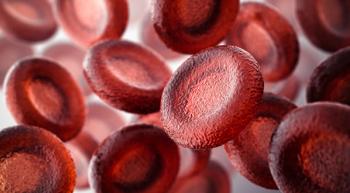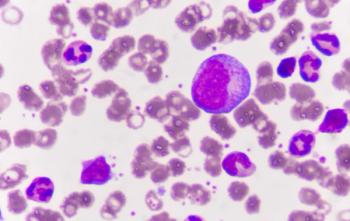
Catheter Represents Preferred Administration Equipment Vs Injection Needle for Subcutaneous Immunotherapy Infusions

Oncology nurses found that the use of a flexible catheter for subcutaneous immunotherapy is linked with increased safety and satisfaction.
The use of catheters instead of injection needles to administer intravenous immunotherapy is linked with increased comfort and satisfaction for patients and infusion nurses alike, according to results of a study presented at the 47th Annual Oncology Nursing Society Congress.
“The BD Saf-T-Intima butterfly catheter is specifically geared towards subcutaneous administration of medications,” Georgina Rogers, BSN, RN, OCN, NE-BC, of Cleveland Clinic Taussig Cancer Institute, said in a poster presentation during the conference. “The nice thing about this particular piece of equipment is that once it is inserted into the patient, you remove the needle stylet– making it needle-less once you remove it from the patient, and what is left in the patient is a flexible catheter for administration.”
Compared with traditional infusion via an injection needle, the use of a catheter was associated with a lack of occlusion, an overall reduction in injection site complications, and reports of nurse satisfaction and comfort with the procedure. Specifically, nurses can attach a syringe to the end of the catheter, creating more space between the patient and nurse and, in turn, increasing the nurses’ comfort. In addition, because the catheter allows for slower infusion times, the injection site stability was increased and absorption was enhanced.
Multiple large volume intravenous infusion immunotherapies have recently been converted to large volume subcutaneous formula infusions comprising of 15 mL and whose administration time lasts up to 8 minutes. The therapy is administered with hyaluronidase to enhance absorption; however, erythema, edema, pruritus, itching, and rash at the injection sites continue to represent potential complications, which can occur up to 24 hours following injection. The large volume and duration time, as well as the difficulty of maintaining needle stability for 8 minutes and the lack of safety cause multiple nurses to voice their concerns.
At the institution where the implementation was rolled out, nurses were experiencing complications in administering rituximab (Rituxan).
Investigators therefore consulted their pharmacy teams about the possibility of using different equipment. Specifically, there were concerns surrounding mitigating any potential risks related to altering the medical integrity of the trials. After identifying the BD Saf-T-Intima butterfly catheter as an appropriate piece of equipment, the study authors then consulted national nursing guidelines to develop appropriate corresponding protocol. Finally, the nurses began implementing nurse education, training, and provision of appropriate supplies.
Overall, the rollout of the catheter utilization was met with nurse satisfaction.
“You are able to apply a transparent dressing over the catheter so that there is a limited movement of that catheter within the subcutaneous tissue, and the nurse can easily, with a little bit of space between them, attach the syringe and administer the medication,” Rogers said.
To ensure that the patient receives all their medication, the nurses conduct a 0.5 flush of the catheter prior to administration and a post-administration flush of 0.5, she noted. However, since implementation, there were no increased instances of occlusion or administration site complications.
Since implementation of this catheter, the FDA has approved additional agents for subcutaneous administration. In addition to rituximab, daratumumab and hyaluronidase-fihj (Darzalex Faspro), and Phesgo (pertuzumab [Perjeta], trastuzumab [Herceptin], and hyaluronidase–zzxf) are also now approved for subcutaneous administration.
The team has therefore implemented additional catheter rollouts, which were described as “relatively seamless,” Rogers noted. In addition, they have created visual aids to help nurses administer subcutaneous administration with pre- and post-procedure instructions.
“When clinical trials are being designed, investigators may not be aware of all of the equipment that may be available for safe administration,” Rogers concluded. “For example, in this case, catheters were used for subcutaneous injection, rather than metal needles. We want to encourage our oncology nurses to advocate for safe medication practices as they play a significant role in safe administration of the medications that are used for cancer treatment.”
Reference
Colvin C, Rodgers G. A novel approach to subcutaneous immunotherapy administration. Presented at: 47th Annual Oncology Nursing Society Congress; April 27-May 1, 2022; Anaheim, CA. Abstract P25.
Newsletter
Knowledge is power. Don’t miss the most recent breakthroughs in cancer care.

















































































